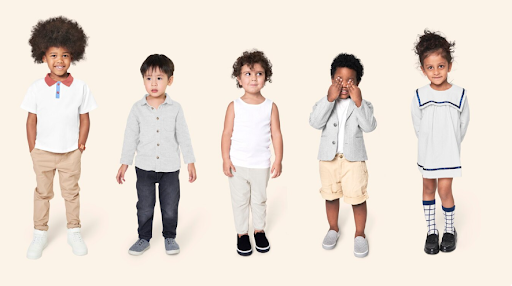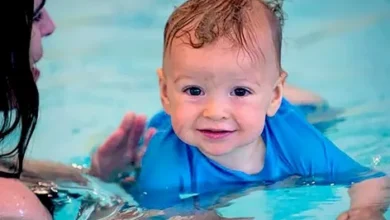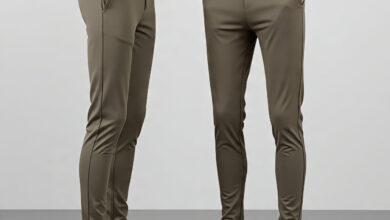Partnering with a Kidswear Manufacturer: Building Safe and Sustainable Children’s Clothing

Creating kidswear is about more than just making smaller versions of adult clothes. It involves strict attention to safety, comfort, and quality from the very beginning. From choosing gentle materials to following global safety rules and keeping production consistent, every detail counts. This guide will help you understand what to look for in a kidswear manufacturing partner—especially if your brand values sustainability, performance, and long-term trust.
Partnering with a Kidswear Manufacturer: A Guide to Safe and Sustainable Product Development
Why Safety is the Most Important Part of Kidswear Manufacturing
When it comes to clothing for children, safety must always come first. Brands in the kidswear market need manufacturing partners who not only know the rules but make safety part of their everyday process. Certifications like OEKO-TEX® Standard 100 and EN 14682 (which covers cords and drawstrings) help ensure that the clothes are free from harmful substances and safe to wear.
A professional kidswear manufacturer doesn’t just stop at checking boxes. They know how to choose skin-friendly fabrics, avoid small parts that can be a choking hazard, and use stronger seams that won’t break during play. They’re also familiar with safety tests and paperwork required in different countries such as the EU or the US.
Importantly, safety should be built into every step of the production—not just tested at the end. That includes early planning, fabric selection, sample development, production, and quality control. When you work with a manufacturer that already has safety systems in place, you’re not just getting a product—you’re gaining a partner who shares your responsibility to protect young consumers. In a market where trust and regulation are everything, that makes all the difference.
Certifications such as OEKO-TEX® Standard 100 are crucial benchmarks
Aligning on Materials and Design: What to Discuss with Your Manufacturer
Fabrics are the foundation of any garment, but in kidswear, they matter even more. Kids have sensitive skin, so materials must be soft, breathable, and safe. Trusted manufacturers—especially sustainable clothing manufacturers—will often recommend natural options like organic cotton or bamboo. These not only feel good but also meet growing consumer expectations for eco-friendly fashion.
However, comfort isn’t just about fabric. Your manufacturing partner should help choose blends that stretch, last longer, or wick moisture depending on how the clothes will be used. For example, if you’re designing school clothes or playwear, the same performance benefits you’d expect from an activewear manufacturer —like durability and flexibility—are just as useful for kids.
Design details also need special care. Flatlock seams, elastic waistbands, and secure stitching improve both comfort and function. For younger children, safety-focused touches like soft closures and no small removable parts help avoid risks.
Fit is another key issue. Because children grow quickly, clothes must be designed to move with them. A skilled manufacturer will offer size grading that fits age groups properly and consider how the garment changes after washing.
This early stage of development is critical. If materials, trims, or sizing aren’t properly aligned now, problems may show up later in production—or worse, after your product reaches the market. A good manufacturing partner won’t just follow instructions—they’ll provide advice and feedback to help turn your ideas into practical, safe designs that kids will actually want to wear.
In kidswear, material quality and thoughtful design directly impact comfort, safety, and wearability.
For kidswear, materials must be soft, breathable, and hypoallergenic to protect sensitive skin
What a Strong Kidswear Production Process Looks Like
A smooth and transparent production process is key to building a successful kidswear line. Unlike regular apparel, making clothes for children requires strict quality control, extra testing, and clear communication at every stage.
The process usually starts with development and sampling. A reliable manufacturer will take your designs and turn them into detailed specs, helping you check for size accuracy, fabric behavior, and small design changes that can improve the final product. Sample garments are tested for things like comfort, strength, and ease of wear.
Next comes lab testing. This includes shrinkage tests, color fading checks, seam strength evaluations, and chemical safety tests. For global distribution, standards like CPSIA (for the US) or REACH (for Europe) must also be met. A qualified manufacturer will either handle this testing directly or work with certified third-party labs and share the results with you.
During production, quality control (QC) is done at several stages—not just at the end. From fabric cutting to sewing and final packaging, each step should be inspected to catch problems early. This avoids expensive mistakes and ensures consistency.
Ethical sourcing and transparency are also important. Responsible kidswear manufacturers will share details about their suppliers, working conditions, and environmental practices. They’ll provide certification documents and factory audit results so you know exactly where your products come from.
To keep production on track, you should expect clear schedules, regular updates, and open communication. These aren’t just nice extras—they’re signs that your partner takes your business seriously and is committed to delivering safe, high-quality children’s clothing.
Behind every successful kidswear brand is a manufacturing process built on structure, transparency, and strict attention to detail
In conclusion, choosing the right kidswear manufacturer isn’t just about price or speed. It’s about finding a partner who takes safety, material quality, and ethical production as seriously as you do. From using certified fabrics and advising on age-appropriate design to providing transparency throughout the process, a skilled manufacturer helps turn your brand values into products parents can trust.
Whether you’re working with a sustainable clothing manufacturer or an activewear manufacturer branching into kidswear, the right partner will help you deliver products that are safe, comfortable, and ready for the global market. In children’s fashion, doing things right from the start isn’t just smart—it’s essential.



